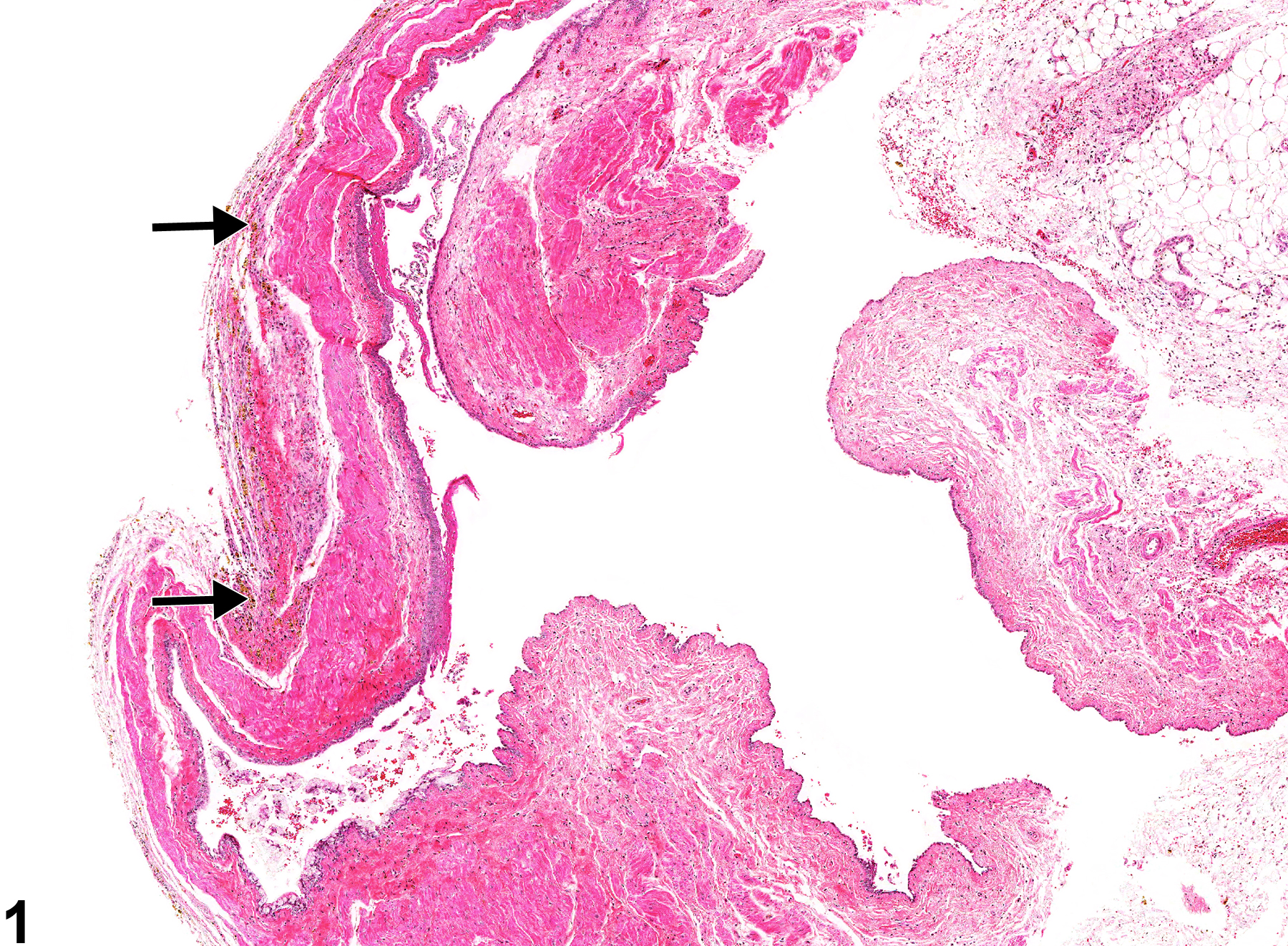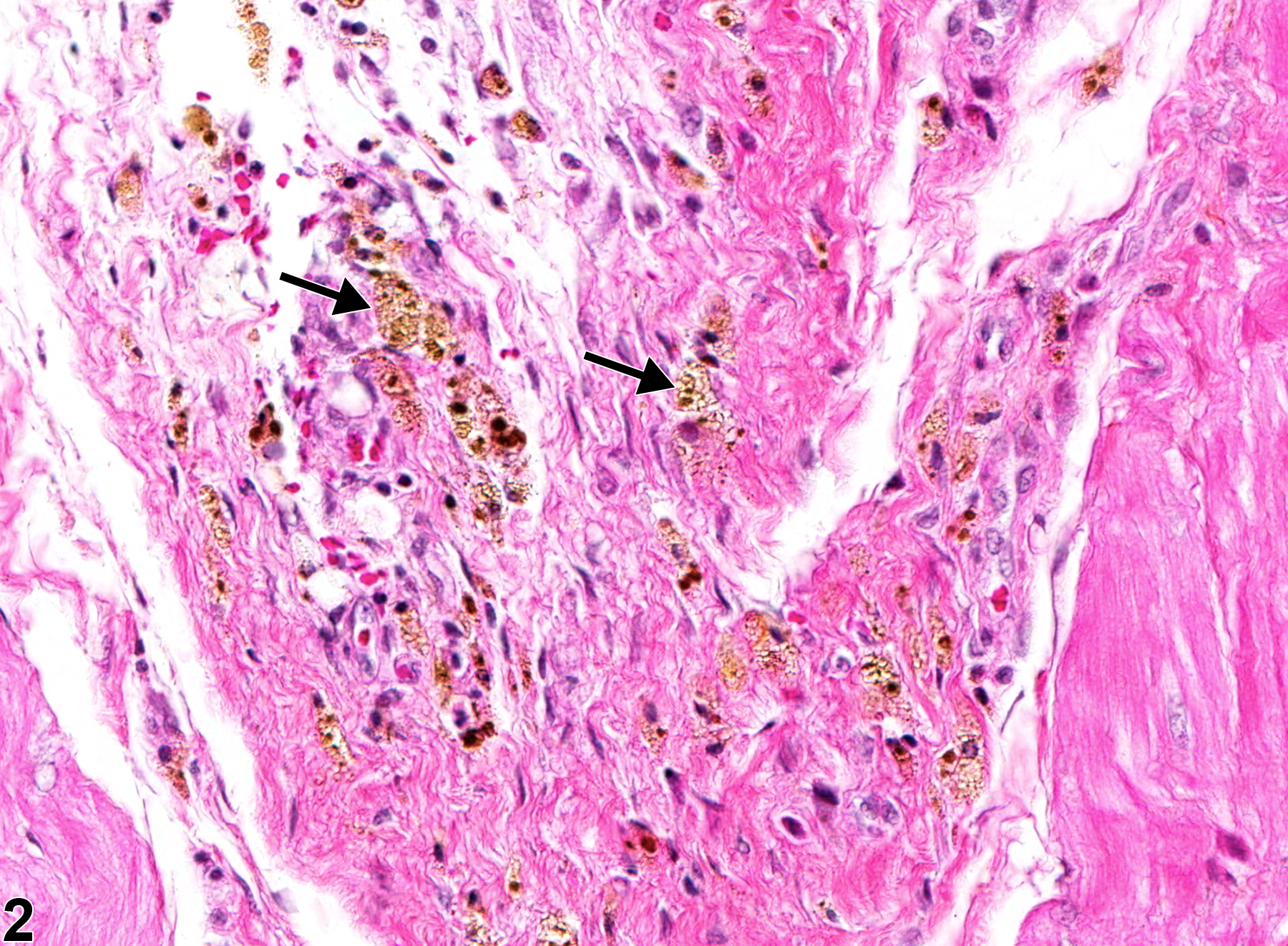Reproductive System, Female
Vagina - Pigment
Narrative
Vagina - Pigment should be diagnosed when it is considered to be relevant to the study (or if it is unclear whether it is relevant to the study) or if it is unusually prominent. Not all pigments have to be diagnosed, as some are ubiquitous in aging animals or are secondary to another disease process (e.g., hemorrhage) and not toxicologically meaningful. The pathologist should use his or her judgment in deciding whether or not the pigment should be diagnosed. Definitive pigment identification is often difficult in histologic sections, even with a battery of special stains. Therefore, a diagnosis of "pigment" (as opposed to diagnosing the type of pigment, e.g., hemosiderin or lipofuscin) is most appropriate. The pathology narrative should describe the morphologic features of the pigmentation. When pigment is diagnosed, it should be given a severity grade.
National Toxicology Program. 1998. NTP TR-477. Toxicology and Carcinogenesis Studies of 1-Chloro-2-propanol (Technical Grade) (CAS No. 127-00-4) in F344/N Rats and B6C3F1 Mice (Drinking Water Studies). NTP, Research Triangle Park, NC.
Abstract: https://ntp.niehs.nih.gov/go/9756
Vagina - Pigment in a female F344/N rat from a chronic study. The arrows indicate the pigment in the vagina.



